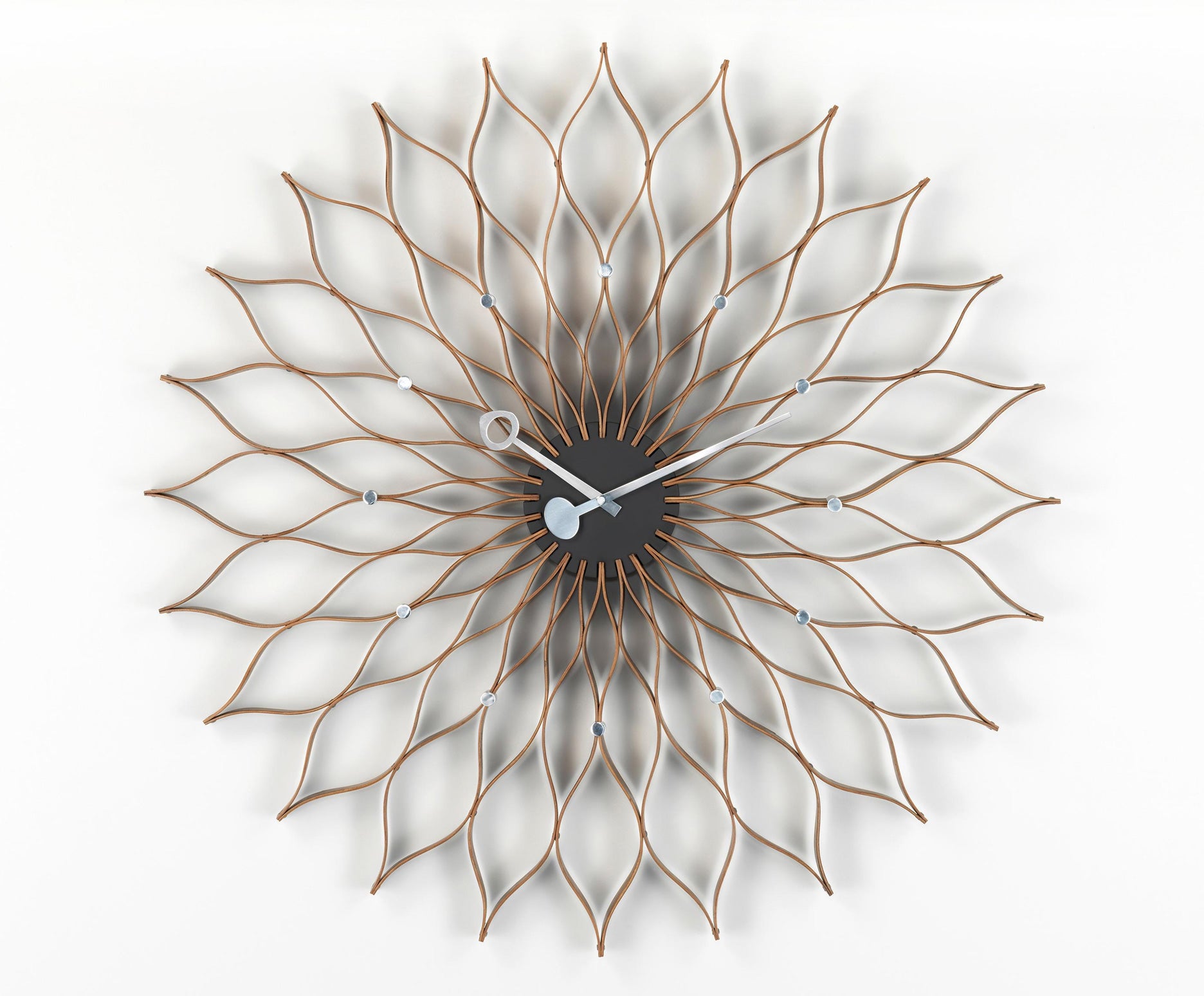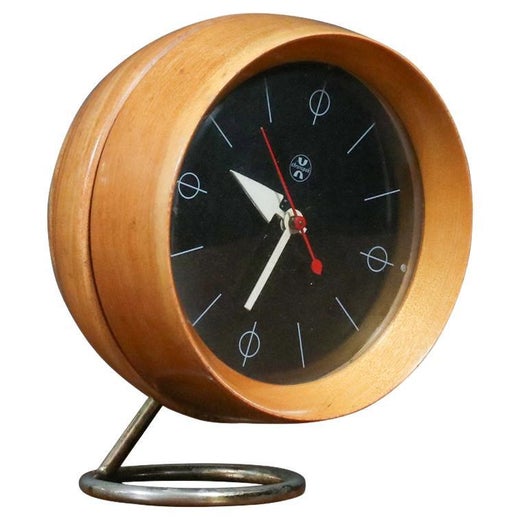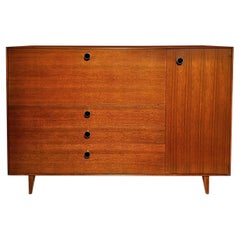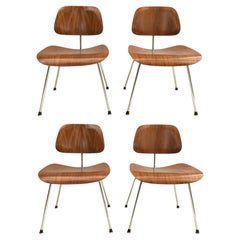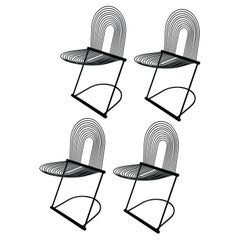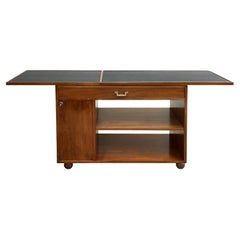George Nelson for Vitra Sunflower Wall Clock
About the Item
- Creator:George Nelson (Designer)
- Design:
- Dimensions:Height: 29 in (73.66 cm)Width: 2.75 in (6.99 cm)Depth: 29 in (73.66 cm)
- Style:Mid-Century Modern (In the Style Of)
- Materials and Techniques:
- Period:2000-2009
- Date of Manufacture:2001
- Condition:Wear consistent with age and use.
- Seller Location:Lake Worth, FL
- Reference Number:1stDibs: LU6190228004302
Sunflower Clock
With thin strips of lacquered bent plywood “petals” spanning 30 inches in diameter, the Sunflower clock by New York City–born designer Irving Harper (1916–2015), who worked for George Nelson (1908–86), is a classic mid-century ode to the eponymous plant. Nelson’s firm developed a collection of clocks — decorative, geometrically complex fixtures that dispensed with numerals altogether — beginning in 1947 for the Howard Miller Clock Company, which was once part of Herman Miller. Over the years, George Nelson Associates designed more than 150 clocks.
A Yale School of Architecture alumnus, Nelson opened his design firm by the mid-1930s, but it was his journalism — covering prominent architects for the design journal Pencil Points, editing at Fortune and Architectural Forum, coauthoring a legendary book on homebuilding called Tomorrow's House — that ultimately earned him a director of design role at Herman Miller in 1947. He kept his studio open, and around the same time offered a design job there to Harper, who was working on interiors commissions at Raymond Loewy Associates. A fortuitous night of cocktails during Harper’s first year at Nelson’s office led to the young designer’s conceiving the Ball clock, which went into production in 1949. Model 2261 — the Sunflower — followed around 10 years later.
Nelson and his team determined that numbers mattered far less to people than the position of the hands when it came to telling time, so they prioritized sculptural forms over integrating numerals on the clocks they designed. Manufacturing ceased in the mid-1980s for Harper’s work of floral splendor, but Vitra resumed production of the clocks, including the now-battery-powered Sunflower clock, in 1999.
George Nelson
Architect, designer, and writer George Nelson was a central figure in the mid-century American modernist design movement; and his thoughts influenced not only the furniture we live with, but also how we live.
Nelson came to design via journalism and literature. Upon receiving his bachelor’s degree in architecture from Yale in 1931, he won the Prix de Rome fellowship, and spent his time in Europe writing magazine articles that helped bring stateside recognition to Ludwig Mies van der Rohe, Gio Ponti, Le Corbusier and other canonical modernist architects.
In the 1940s, Nelson wrote texts that suggested such now-commonplace ideas as open-plan houses, storage walls and family rooms. D.J. De Pree, the owner of the furniture maker Herman Miller, was so impressed by Nelson that in 1944 — following the sudden death of Gilbert Rohde, who had introduced the firm to modern design in the 1930s — he invited Nelson to join the company as its design director. There Nelson’s curatorial design talents came to the fore.
To Herman Miller he brought such eminent creators as Charles and Ray Eames, Isamu Noguchi, and the textile and furniture designer Alexander Girard. Thanks to a clever contract, at the same time as he directed Herman Miller he formed a New York design company, George Nelson & Associates, that sold furniture designs to the Michigan firm. Nelson's studio also sold designs for clocks to the Howard Miller Clock Company, a manufacturer that was initially part of Herman Miller before it became an offshoot that was helmed by Howard Miller, D.J. De Pree's brother-in-law.
Nelson’s New York team of designers (who were rarely individually credited) would create such iconic pieces as the Marshmallow sofa, the Coconut chair, the Ball clock, the Bubble lamp series and the many cabinets and beds that comprise the sleek Thin-Edge line.
For dedicated collectors, as well as for interior designers who look beyond “the look,” there is a “cool factor” inherent to vintage pieces from George Nelson and others. Nelson was in on it from the start, and it’s valuable to have a piece that was there with him.
But still, as is evident from the offerings from dealers on 1stDibs, in any of the designs, in any iteration whose manufacture Nelson oversaw and encouraged, there are shining elements of lightness, elegance, sophistication — and a little bit of swagger. George Nelson felt confident in his ideas about design and didn’t mind letting the world know.
You May Also Like
Mid-20th Century American Mid-Century Modern Wall Clocks
Metal
Vintage 1950s American Mid-Century Modern Wall Clocks
Brass
Mid-20th Century American Mid-Century Modern Wall Clocks
Metal, Enamel
Vintage 1950s American Mid-Century Modern Table Clocks and Desk Clocks
Metal, Brass
Vintage 1950s American Mid-Century Modern Table Clocks and Desk Clocks
Metal, Brass
Vintage 1950s American Mid-Century Modern Table Clocks and Desk Clocks
Metal, Chrome
Vintage 1950s American Mid-Century Modern Wall Clocks
Rattan
Vintage 1950s American Scandinavian Modern Wall Clocks
Brass
Vintage 1950s American Mid-Century Modern Clocks
Wood
Vintage 1950s American Mid-Century Modern Table Clocks and Desk Clocks
Brass
More From This Seller
View AllMid-20th Century American Mid-Century Modern Secretaires
Walnut
Vintage 1950s American Mid-Century Modern Dining Room Chairs
Chrome
Vintage 1980s German Post-Modern Dining Room Chairs
Metal
Vintage 1960s American Mid-Century Modern Dry Bars
Walnut
Late 20th Century Danish Mid-Century Modern Credenzas
Wood
Mid-20th Century Mid-Century Modern Dry Bars
Iron
Recently Viewed
View AllRead More
A Guide to Herman Miller’s Most Iconic Furniture
The prolific manufacturer has partnered with many of the world’s top designers since opening its doors in 1923. Here are some of the company’s greatest hits, which helped transform the American home and office.
Kule and Forsyth Give Iconic Furniture a Bold Makeover with Stripes
Maggie and Anne Genovese, of Forsyth, teamed up with fashion designer Nikki Kule to reimagine some classic pieces.
